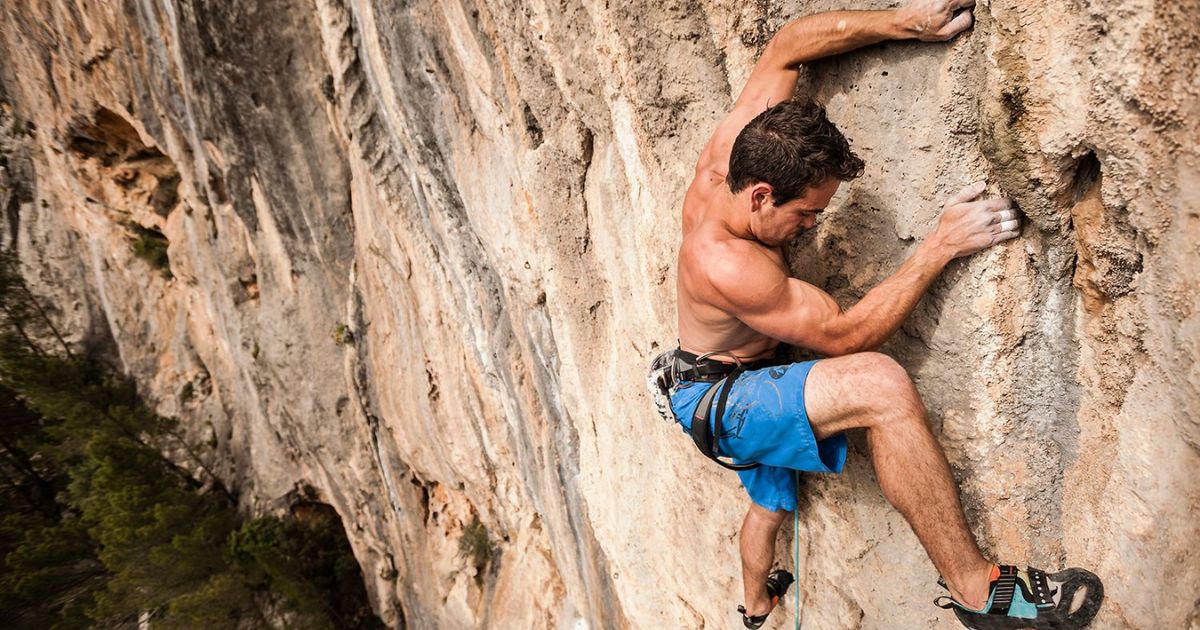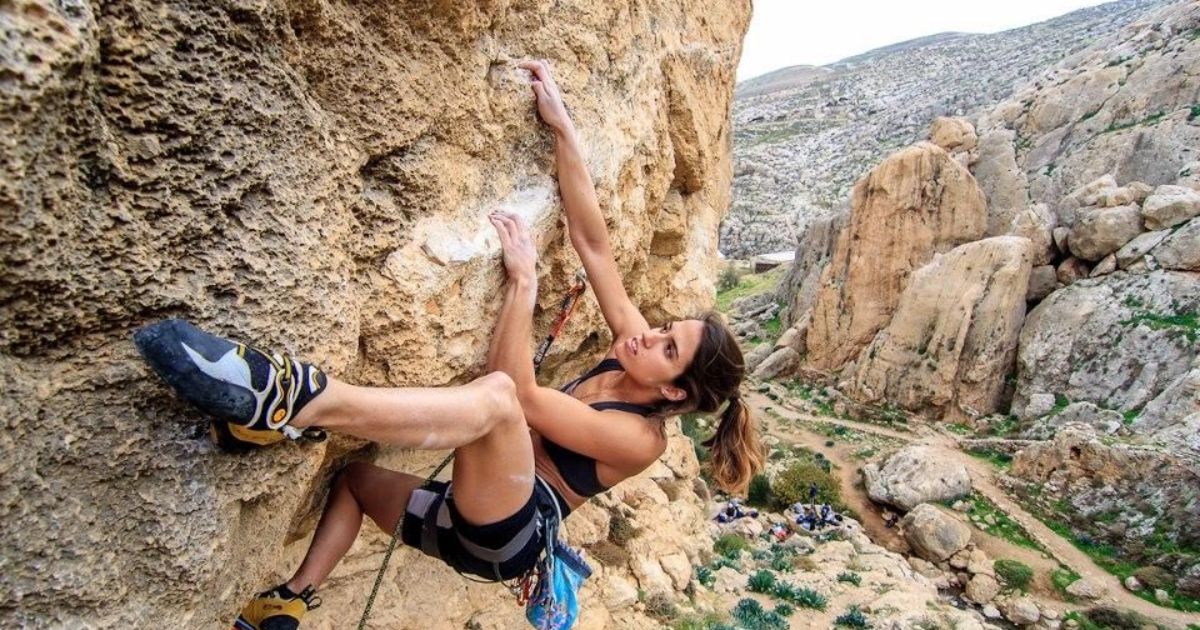Like a skilled musician plucking the strings of a guitar, rock climbers engage a symphony of muscles in their bodies. From the powerful grip of their hands to the steady foundation of their legs, each movement requires a harmonious collaboration of strength and agility. In this article, we delve into the intricate dance between rock climbing and the muscles it works. Prepare to be amazed as we uncover the hidden orchestra of upper body, core, lower body, grip, forearm, back, shoulder, and arm muscles that come alive on the rock face.
Key Takeaways
- Rock climbing works the upper body muscles, including the forearms, biceps, triceps, shoulders, and back muscles.
- It also engages the core muscles, including the abdominals, obliques, lower back muscles, and transverse abdominis.
- The lower body muscles, such as the quadriceps, hamstrings, calves, and glutes, are also worked during rock climbing.
- Grip and forearm muscles, as well as shoulder and arm muscles, are heavily involved in rock climbing and develop strength and endurance through regular climbing.
Upper Body Muscles Worked in Rock Climbing
The upper body muscles worked in rock climbing include the forearms, biceps, triceps, and shoulders. Rock climbing requires a significant amount of grip strength, which is primarily developed in the forearms. The constant gripping and pulling motions engage the muscles in the forearm, helping climbers maintain a strong hold on the rock surface. The biceps and triceps also play a crucial role in rock climbing, as they are responsible for the pulling and pushing movements required to ascend the wall or cliff.
Additionally, the shoulders are heavily involved in rock climbing, as they provide stability and assist in maintaining balance while reaching for holds. These upper body muscles work together to support climbers in their quest to conquer challenging routes. Now, let’s explore the core muscles activated during rock climbing.
Core Muscles Activated During Rock Climbing
Core strength is essential in rock climbing, as it provides stability and balance while navigating challenging routes. Rock climbers heavily rely on their core muscles to maintain proper body positioning, generate power, and transfer force efficiently. The core muscles, including the abdominals, obliques, and back muscles, play a crucial role in stabilizing the spine and pelvis, allowing climbers to maintain a strong and controlled posture throughout their ascent.
To better understand the core muscles activated during rock climbing, let’s take a look at the following table:
| Core Muscles | Function |
|---|---|
| Abdominals | Flexion and rotation of the trunk |
| Obliques | Lateral flexion and rotation of the trunk |
| Erector Spinae | Extension and stabilization of the spine |
| Transverse Abdominis | Deep stabilization of the spine |
Lower Body Muscles Engaged in Rock Climbing
Rock climbing engages key leg muscles, providing numerous benefits to lower-body strength. The quadriceps, hamstrings, glutes, and calves are all actively involved in the climbing movement, as they work to propel the climber upwards and maintain balance. Developing strength in these muscles can improve overall stability, power, and endurance, ultimately enhancing climbing performance.
Key Leg Muscles Engaged
Leg muscles play a crucial role in rock climbing, as they are actively engaged throughout the climbing process. The key leg muscles engaged in rock climbing include the quadriceps, hamstrings, calves, and glutes. The quadriceps, located at the front of the thighs, are responsible for extending the knees and providing stability during climbing movements.
The hamstrings, located at the back of the thighs, help in flexing the knees and provide power for pushing off during upward movements. The calves, located on the back of the lower legs, assist in maintaining balance and stability while standing on small footholds. Lastly, the glutes, the largest muscles in the buttocks, aid in hip extension and provide power for pushing off during climbing. Strengthening and conditioning these leg muscles is essential for improving climbing performance and preventing injuries.
Benefits of Lower-Body Strength
Developing strength in the lower body muscles engaged in rock climbing offers a range of benefits for climbers. Strong lower body muscles, such as the glutes, quadriceps, hamstrings, and calves, play a crucial role in providing stability, power, and balance during climbing movements. By strengthening these muscles, climbers can enhance their overall performance and reduce the risk of injury.
Having strong glutes helps in generating power and stability while pushing off from the wall. The quadriceps, the muscles on the front of the thigh, are responsible for straightening the leg, which is essential for upward movement. Hamstrings, on the other hand, assist in bending the knee, which is necessary for climbing and maintaining balance. Strong calves aid in providing stability and control during foot placement.
In addition to improving climbing ability, lower body strength gained through rock climbing can have positive effects on everyday activities. Strong leg muscles contribute to better posture, increased endurance, and improved overall fitness. It also helps in preventing lower body injuries and promotes efficient energy transfer throughout the body.
Grip and Forearm Muscles Used in Rock Climbing
During rock climbing, the repetitive and strenuous nature of the activity engages and strengthens the numerous small muscles in the hands and forearms. Grip and forearm muscles play a vital role in rock climbing as they are responsible for maintaining a strong hold on the rock surface and supporting the body’s weight. The flexor muscles in the forearm, such as the flexor digitorum profundus and flexor pollicis longus, are heavily involved in gripping and pulling movements.
These muscles work in conjunction with the muscles in the hands, including the flexor digitorum superficialis and flexor digitorum profundus, to provide the necessary strength and control. The repetitive gripping and pulling actions during climbing help develop endurance and increase the overall strength of these muscles, allowing climbers to tackle more challenging routes with confidence.
Back Muscles Strengthened by Rock Climbing
Rock climbing strengthens the back muscles through the engagement of various muscle groups. When climbing, the back muscles are responsible for maintaining stability and generating power. The table below outlines some of the key back muscles targeted during rock climbing:
| Muscle Group | Main Function |
|---|---|
| Latissimus Dorsi | Pulls the body upward and inward towards the spine |
| Trapezius | Stabilizes and rotates the shoulder blades |
| Rhomboids | Retracts and stabilizes the shoulder blades |
Engaging these muscles not only helps climbers maintain proper form and technique but also builds strength and endurance in the back. Strong back muscles are essential for maintaining balance, preventing injuries, and improving overall climbing performance. Regular rock climbing sessions can help develop a strong and resilient back, allowing climbers to tackle more challenging routes and enjoy the sport to its fullest potential.
Shoulder and Arm Muscles Utilized in Rock Climbing
Regularly practicing rock climbing exercises the shoulder and arm muscles, resulting in increased strength and endurance. The shoulder muscles, including the deltoids, trapezius, and rotator cuff muscles, are heavily engaged during climbing movements. These muscles are responsible for stabilizing the shoulder joint and allowing for a wide range of motion required in various climbing techniques. Additionally, the arm muscles, such as the biceps, triceps, and forearm muscles, play a crucial role in gripping and pulling movements while climbing.
The biceps are particularly active when flexing the elbow during upward movements, while the triceps are essential for extending the elbow during downward movements. The forearm muscles, including the flexor and extensor muscles, are continually engaged in gripping holds, providing the necessary strength and control required for successful climbing. Regular rock climbing not only helps develop strong and toned shoulder and arm muscles but also enhances overall upper body strength and endurance.
Frequently Asked Questions
How Can Rock Climbing Benefit Overall Cardiovascular Fitness?
Rock climbing can benefit overall cardiovascular fitness by providing a full-body workout that engages major muscle groups, increases heart rate and breathing, improves endurance, and promotes better blood circulation.
Can Rock Climbing Help Improve Flexibility and Range of Motion?
Rock climbing requires a combination of strength, endurance, and flexibility. It engages muscles throughout the body, including the upper body, core, and legs. This activity can help improve flexibility and range of motion by challenging muscles to move in various directions and positions.
Are There Any Specific Exercises or Training Techniques That Can Complement Rock Climbing?
There are several exercises and training techniques that can complement rock climbing. These include fingerboarding, campus board training, core exercises, and antagonist muscle training. These exercises help improve strength, endurance, and balance, enhancing overall climbing performance.
Is Rock Climbing Suitable for Individuals With Pre-Existing Shoulder or Back Injuries?
Rock climbing can be strenuous on the shoulders and back, making it potentially unsuitable for individuals with pre-existing injuries in these areas. It is important for individuals with such injuries to consult with a healthcare professional before engaging in rock climbing activities.
Does Rock Climbing Provide Any Mental Health Benefits, Such as Stress Relief or Improved Focus?
Rock climbing provides numerous mental health benefits, such as stress relief and improved focus. Research suggests that engaging in this challenging activity can reduce anxiety, increase self-confidence, and promote mindfulness, making it an effective tool for mental well-being.
Conclusion
In conclusion, rock climbing is a physically demanding activity that engages multiple muscle groups. The upper body muscles, such as the biceps, triceps, and deltoids, are heavily worked during climbing. The core muscles, including the abdominals and obliques, provide stability and balance. Lower body muscles, such as the quadriceps and calves, are engaged for pushing and support. Grip and forearm muscles are crucial for holding onto the rocks. Finally, the back muscles, as well as the shoulder and arm muscles, play a significant role in rock climbing. This sport truly tests one’s strength and endurance, making it a challenging and rewarding experience. As the saying goes, “No pain, no gain.”










